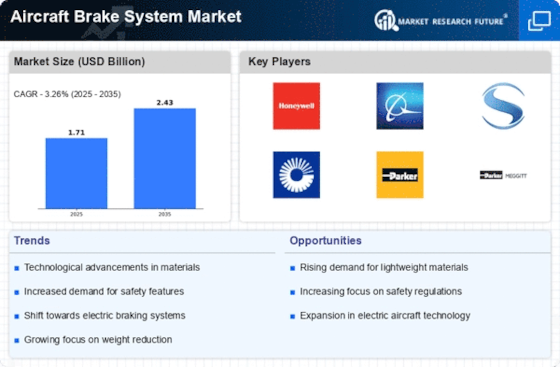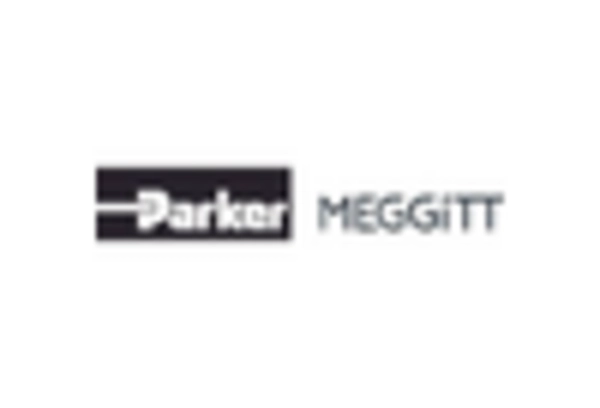Growth of the Military Aviation Sector
The Aircraft Brake System Market is also benefiting from the growth of the military aviation sector. Governments worldwide are increasing their defense budgets, leading to the procurement of advanced military aircraft. These aircraft require sophisticated brake systems that can withstand extreme conditions and provide reliable performance. The demand for military aircraft is projected to rise, driven by geopolitical tensions and the need for enhanced defense capabilities. As a result, manufacturers in the Aircraft Brake System Market are likely to see increased orders for specialized braking systems designed for military applications. This segment is expected to contribute significantly to the overall market growth, as defense contracts often involve long-term partnerships and substantial investments.
Increasing Demand for Commercial Aviation
The Aircraft Brake System Market is significantly influenced by the rising demand for commercial aviation. As air travel continues to expand, airlines are investing in new aircraft to accommodate growing passenger numbers. This trend is likely to result in an increased need for advanced brake systems that ensure safety and reliability. The International Air Transport Association (IATA) forecasts that global passenger traffic will double over the next two decades, which could lead to a substantial increase in aircraft production. Consequently, the demand for high-performance brake systems is expected to rise, driving growth in the Aircraft Brake System Market. Manufacturers are thus focusing on developing systems that not only meet regulatory standards but also enhance operational efficiency.
Regulatory Compliance and Safety Standards
The Aircraft Brake System Market is heavily influenced by stringent regulatory compliance and safety standards imposed by aviation authorities. Organizations such as the Federal Aviation Administration (FAA) and the European Union Aviation Safety Agency (EASA) set rigorous guidelines that manufacturers must adhere to in order to ensure the safety and reliability of aircraft brake systems. As regulations evolve, there is a growing emphasis on the development of advanced braking technologies that meet these standards. This regulatory landscape is likely to drive innovation and investment in the Aircraft Brake System Market, as companies strive to enhance their product offerings while ensuring compliance. The increasing focus on safety is expected to propel market growth, as airlines prioritize the reliability of their braking systems.
Sustainability and Environmental Considerations
The Aircraft Brake System Market is increasingly influenced by sustainability and environmental considerations. As the aviation sector faces pressure to reduce its carbon footprint, manufacturers are exploring eco-friendly materials and processes for brake system production. The adoption of lightweight materials not only enhances fuel efficiency but also aligns with global sustainability goals. Additionally, the push for electric and hybrid aircraft is prompting innovations in braking technologies that minimize environmental impact. This trend is likely to drive investment in research and development within the Aircraft Brake System Market, as companies seek to create more sustainable solutions. The growing emphasis on environmental responsibility is expected to shape the future of the market, as stakeholders prioritize eco-friendly practices.
Technological Innovations in Aircraft Brake Systems
The Aircraft Brake System Market is experiencing a surge in technological innovations that enhance performance and safety. Advanced materials, such as carbon-carbon composites, are increasingly utilized in brake systems, providing superior heat resistance and weight reduction. This shift towards high-performance materials is expected to drive market growth, as manufacturers seek to improve aircraft efficiency. Furthermore, the integration of smart technologies, including sensors and automated systems, allows for real-time monitoring and predictive maintenance, thereby reducing operational costs. According to industry estimates, the market for advanced aircraft brake systems is projected to grow at a compound annual growth rate of approximately 5% over the next five years, indicating a robust demand for innovative solutions in the Aircraft Brake System Market.

















Leave a Comment